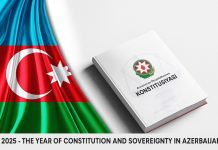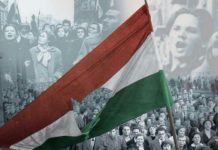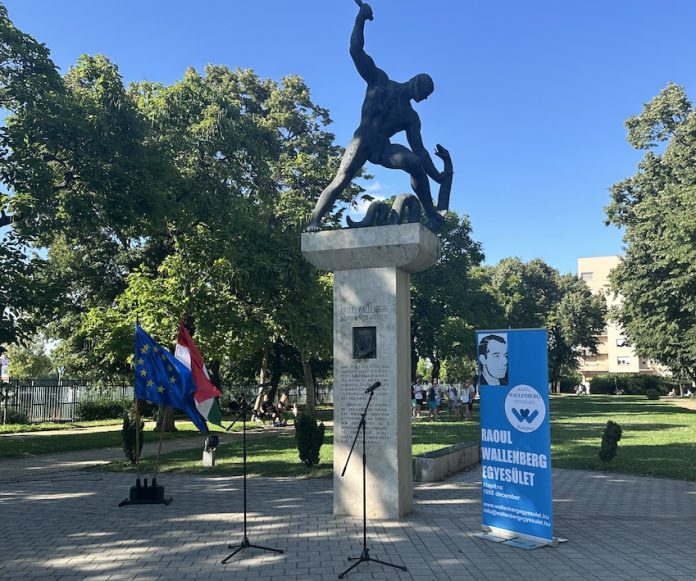A Righteous Man in an Age of Inhumanity
Edited by Anna Popper
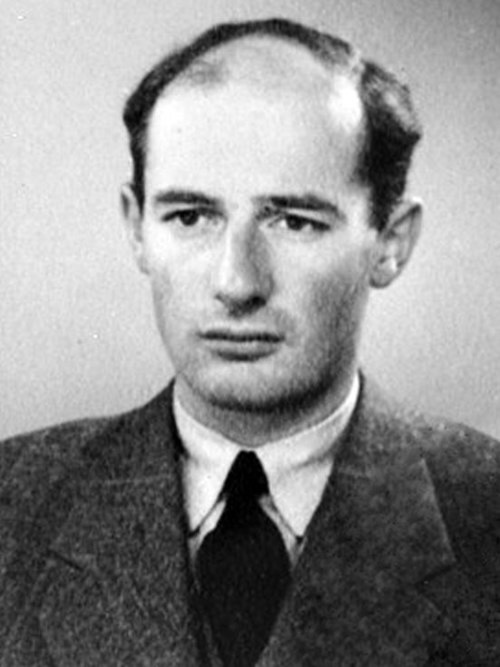
On 4 August 2025, survivors, diplomats, government officials, and civic leaders gathered in Szent István Park (St. Stephen’s Park) in Budapest’s 13th District to commemorate Raoul Wallenberg’s birthday.
The Swedish diplomat, with his extraordinary courage, saved tens of thousands of Hungarian Jews during the Holocaust.
The annual ceremony was held at the Wallenberg Monument in Szent István Park, near the Swedish “protected houses” that Wallenberg established in 1944. Organised by the Embassy of Sweden and the Raoul Wallenberg Association, the commemoration brought together representatives of 25 embassies and five international organisations, officials from the Ministry of Foreign Affairs and Trade, from the Municipality of Budapest, and members of the Federation of Hungarian Jewish Communities (Mazsihisz).
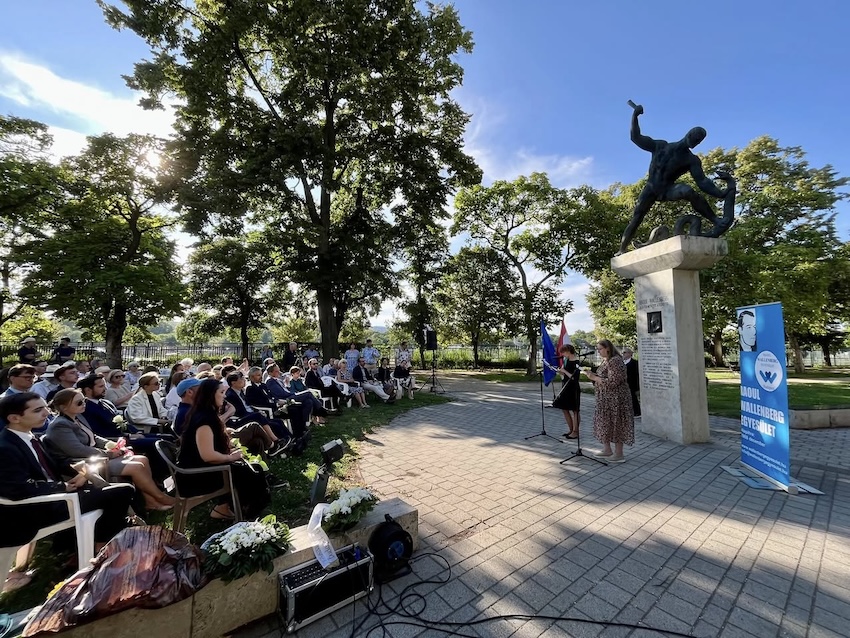
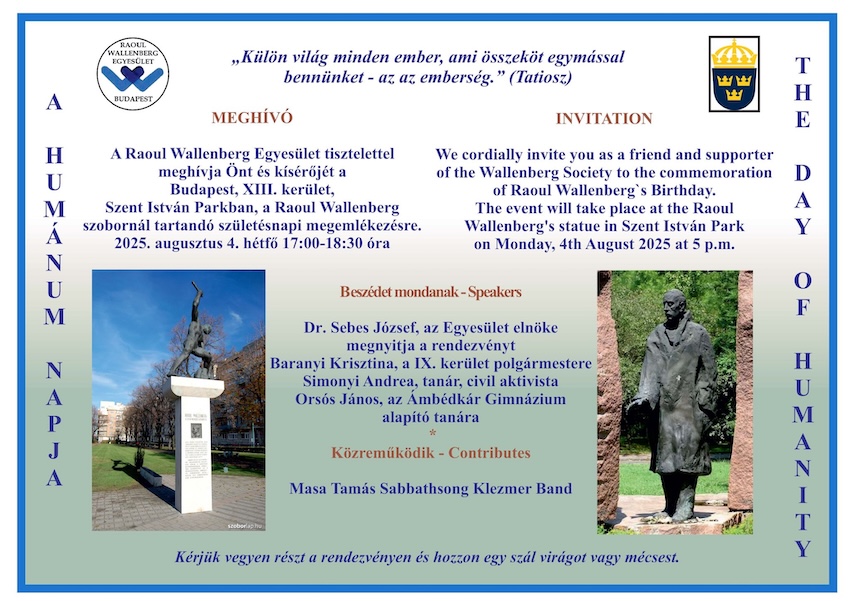
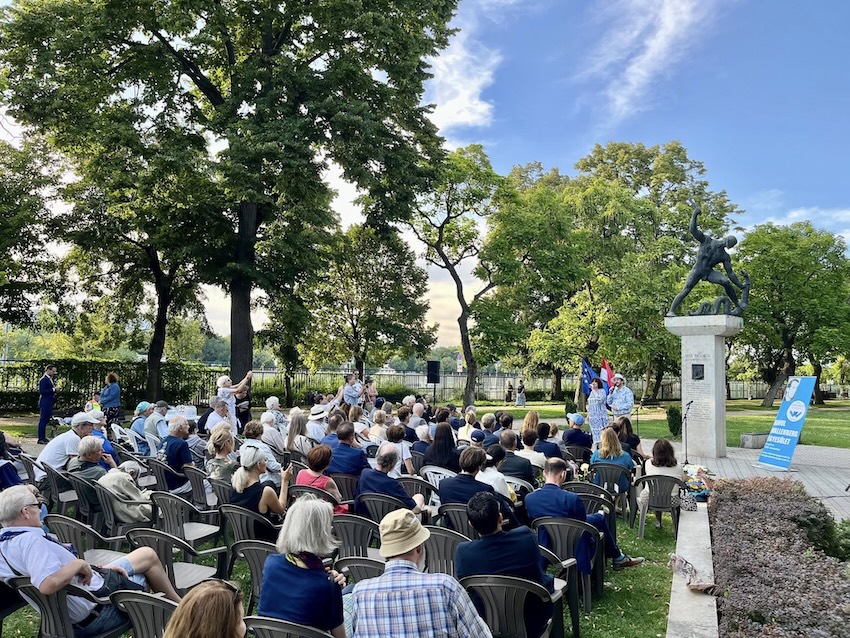
Tributes at the Memorial
The Day of Humanity event was opened with a greeting from Dr. József Sebes, President of the Raoul Wallenberg Association, who addressed the audience with particular attention to the survivors present, and recalled Wallenberg’s extraordinary lifesaving mission during one of the most harrowing periods of the Holocaust in Hungary.
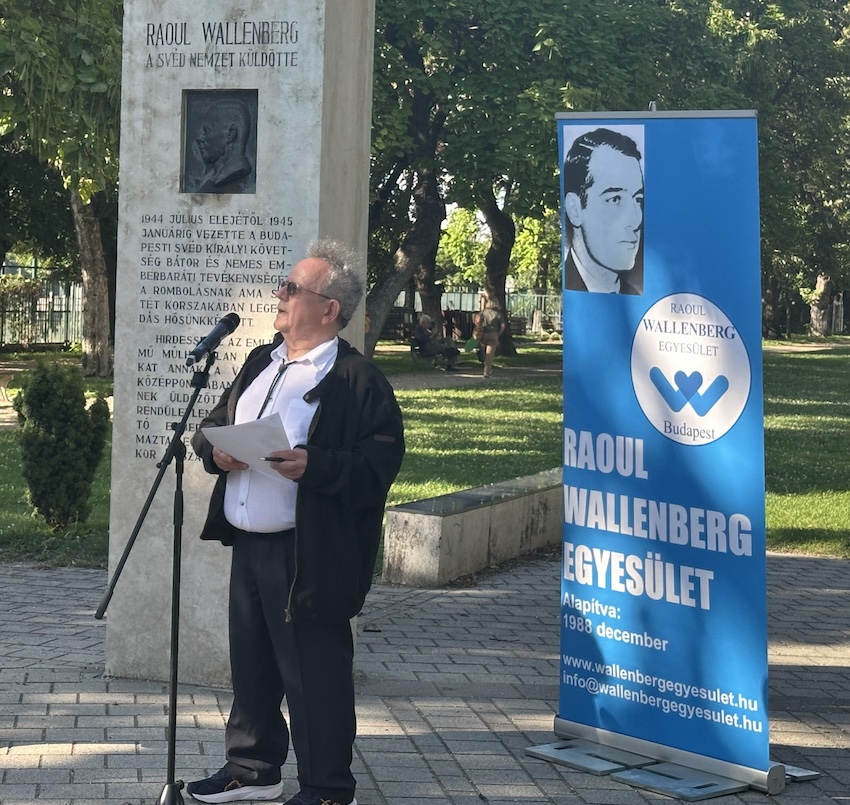
Other speakers included Krisztina Baranyi, Mayor of Budapest’s 9th District; Andrea Simonyi, teacher and civic activist; and János Orsós, founder of the Dr. Ámbédkar School. They reflected on Wallenberg’s enduring legacy as a symbol of humanity, moral strength, conviction, and civil courage in Hungary’s darkest chapter. At this traditional birthday commemoration, the speakers emphasized that remembering Wallenberg is not only a tribute but also a call to uphold humanity and justice in our time.
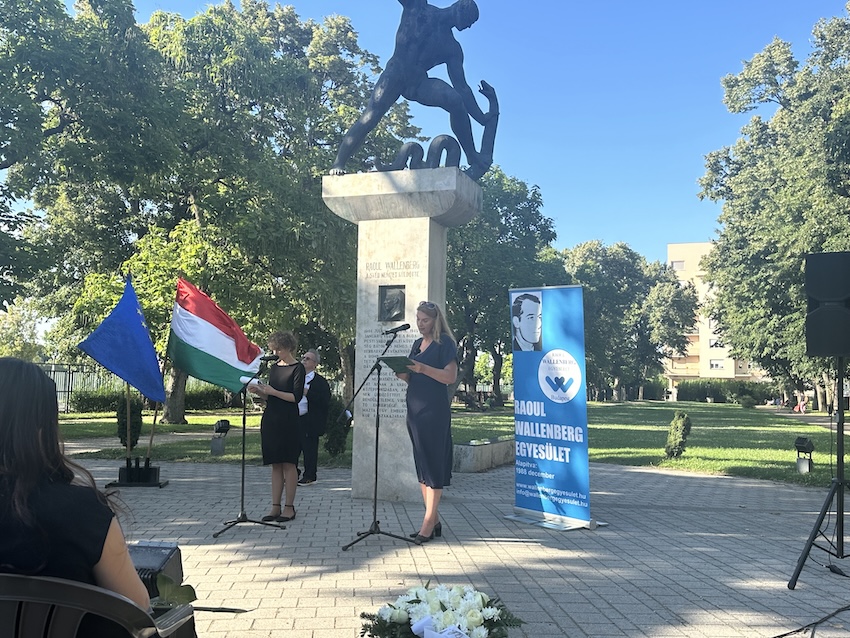
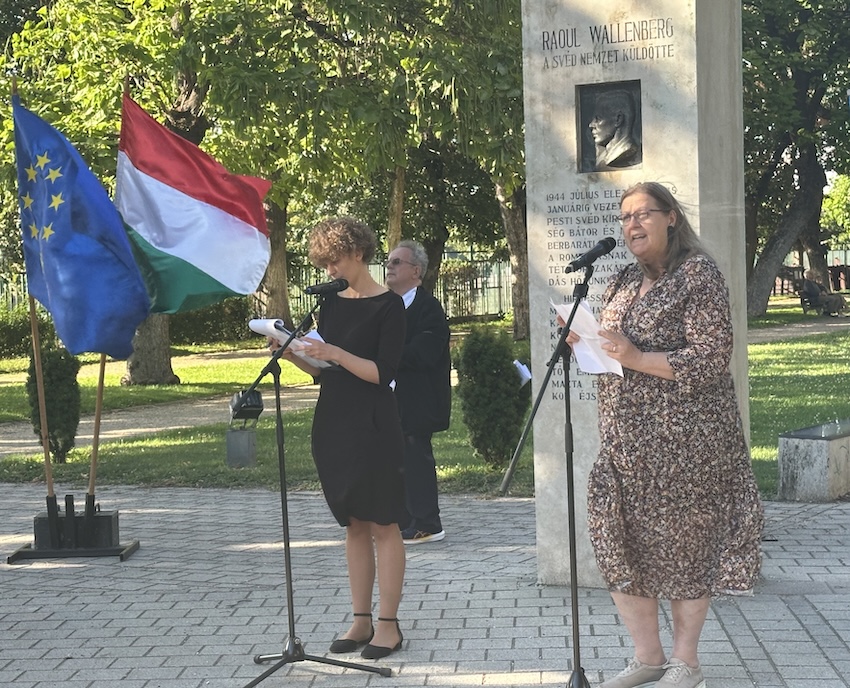
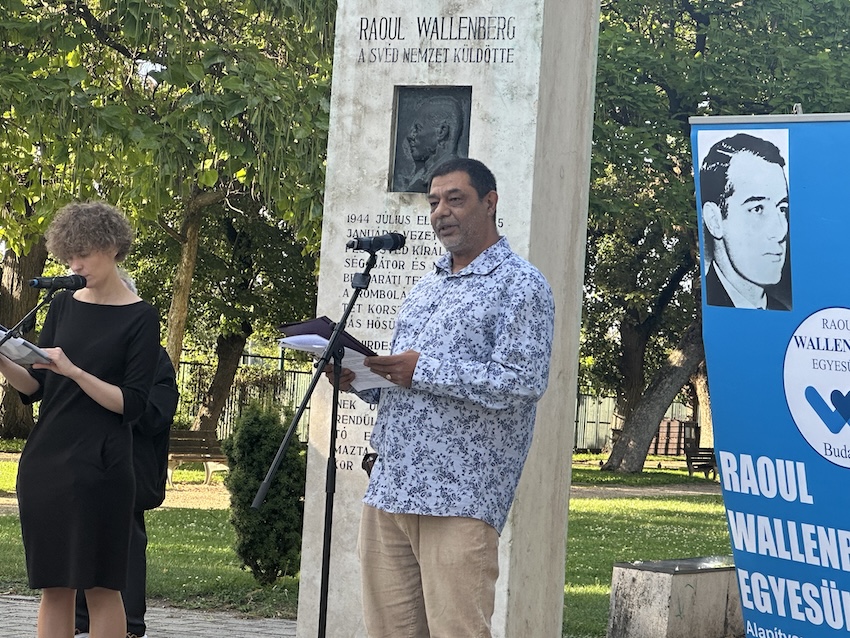
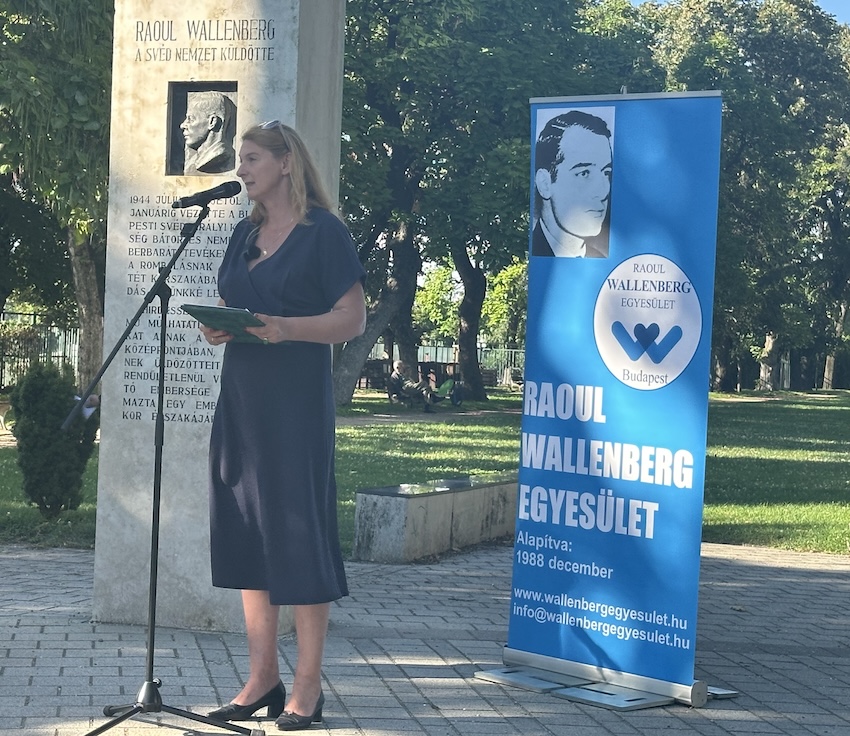
In her address, Mayor Krisztina Baranyi expressed gratitude for the honour of speaking at the commemoration, stressing that Wallenberg, despite being a foreign diplomat, became one of the greatest heroes of Hungarian history. Wallenberg’s courage and humanity, she said, remain especially relevant today, when wars in Ukraine and the Middle East show that hatred and violence still destroy countless lives, and even in peaceful societies prejudice and exclusion continue to threaten human dignity.
“History teaches us that in 1944–45 far more people joined in persecution than in rescue, while most remained silent,” she warned. When the vulnerable – refugees, minorities, or those who live differently – become targets of hostility, we must raise our voices.
“Wallenberg’s example is indispensable today. His story calls upon us to stand with our fellow human beings when they are attacked, even when doing so carries risk. The solidarity we offer today may seem modest compared to his sacrifice, yet it remains our moral duty. To remember Raoul Wallenberg is not only to honour his memory, but also to draw strength from his courage for the challenges of our own time. Wallenberg’s story reminds us that solidarity, even at risk, is our moral duty.”
The ceremony was enriched by musical interludes, performed by Tamás Masa and Anita Masa (Sabbathsong). Their program, specially chosen for the occasion, included also a song by Iván Szenes, a prolific Hungarian writer, songwriter, playwright, and composer known as “The King of Hits.”
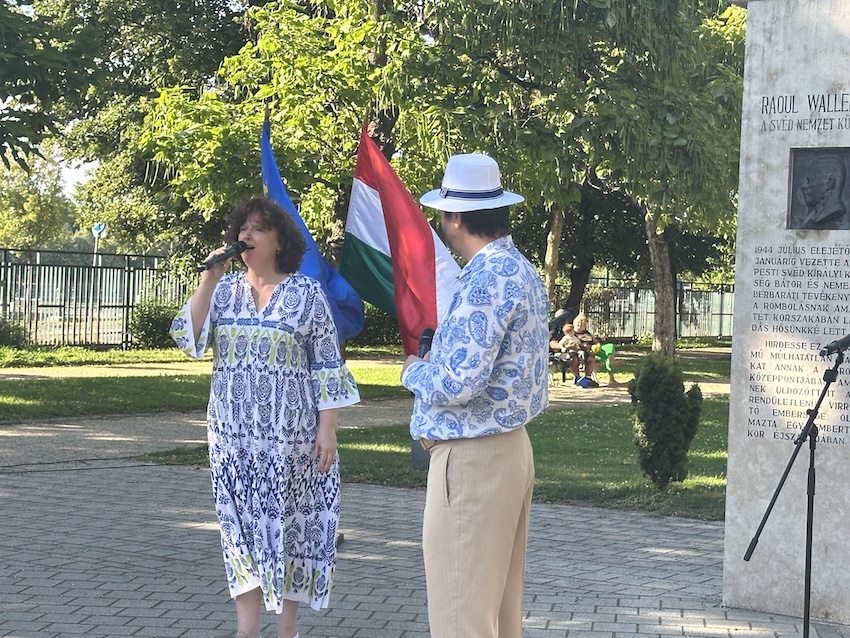
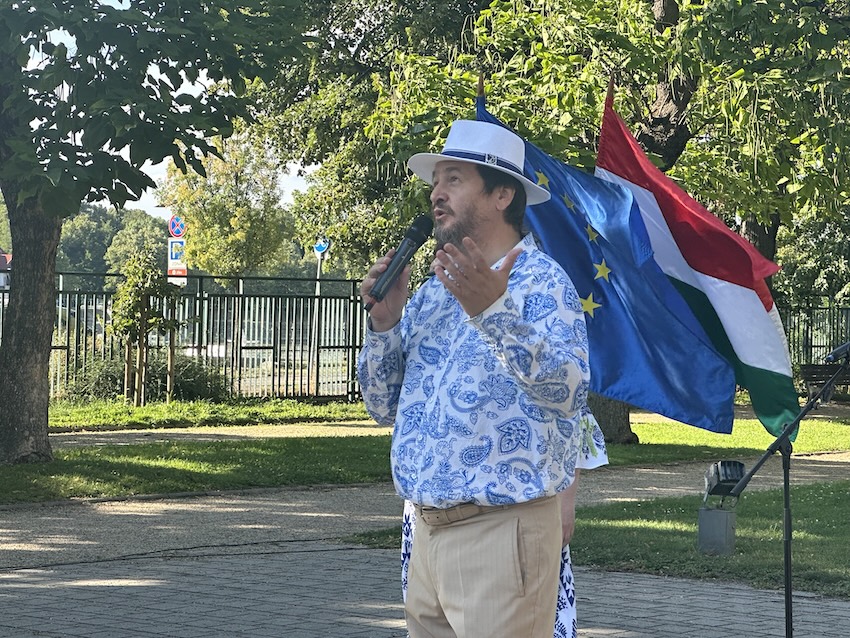
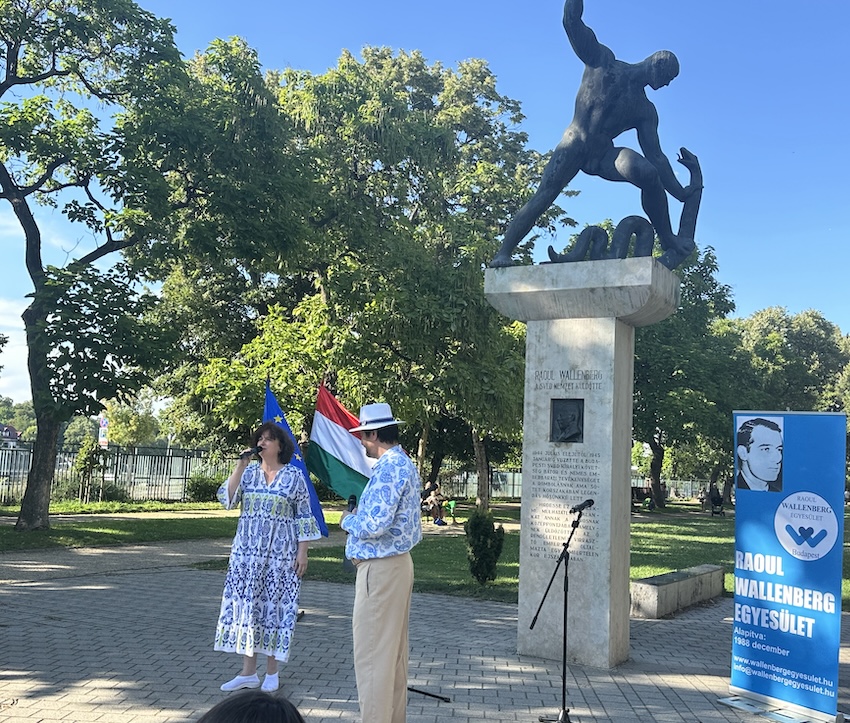
At the close of the event, participants laid wreaths and flowers at Wallenberg’s memorial, honouring his lasting memory.
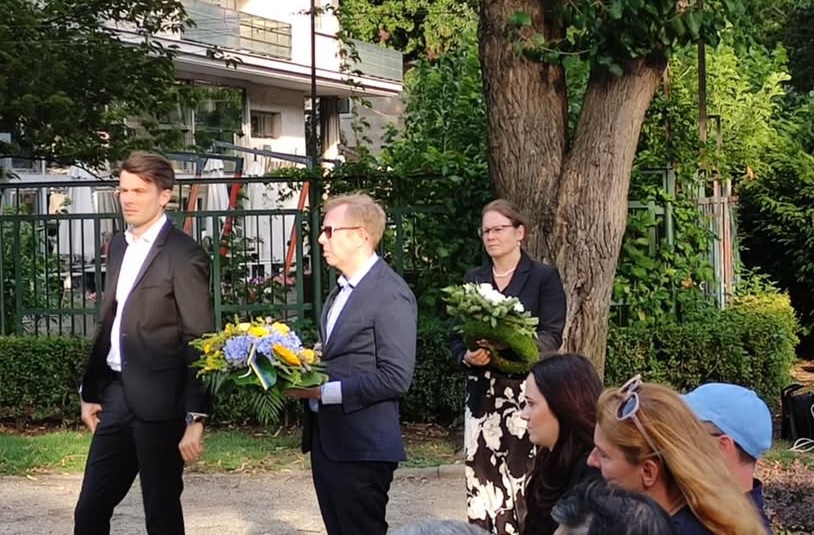
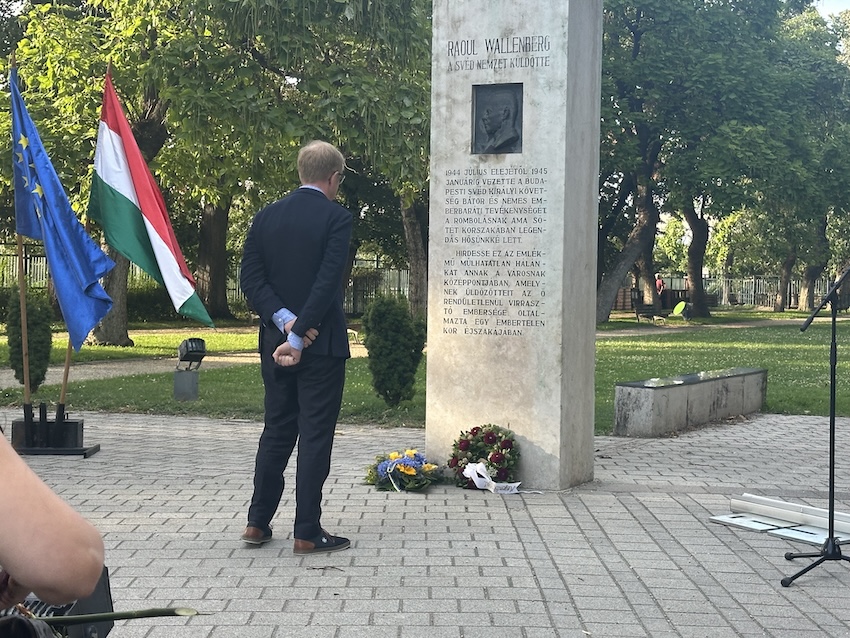
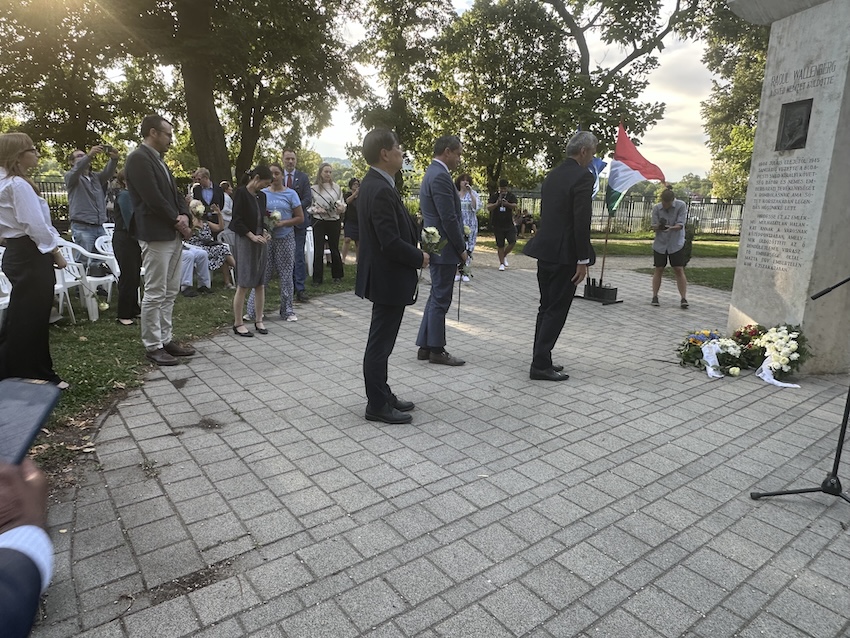

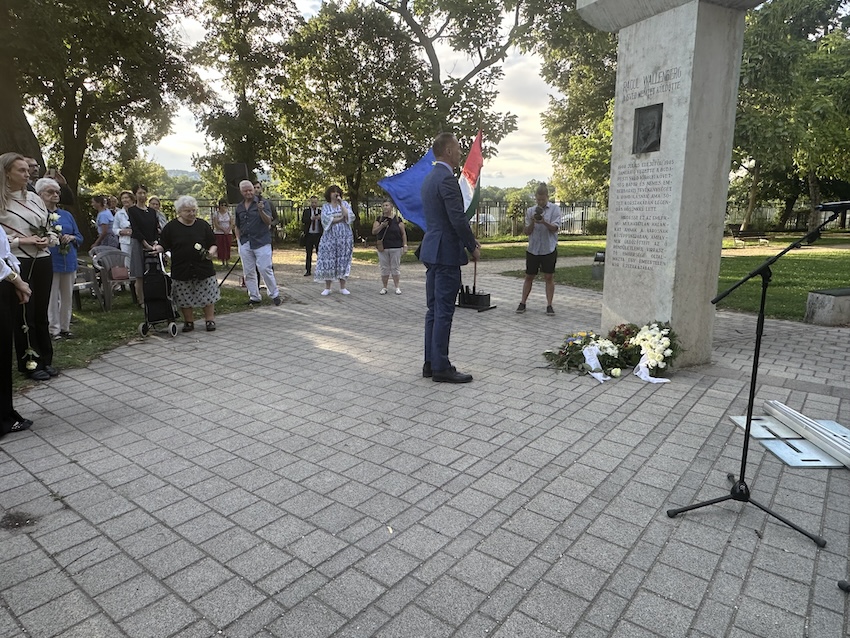
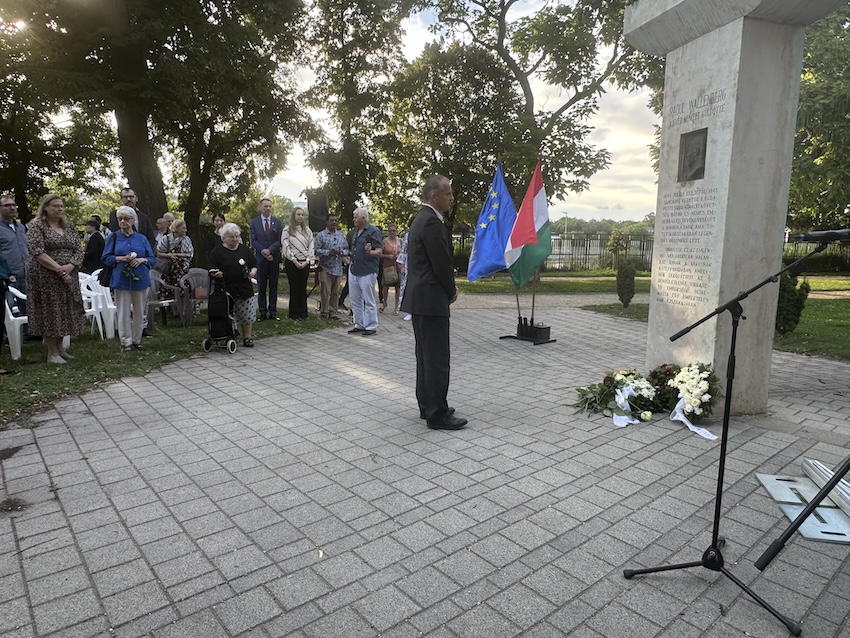


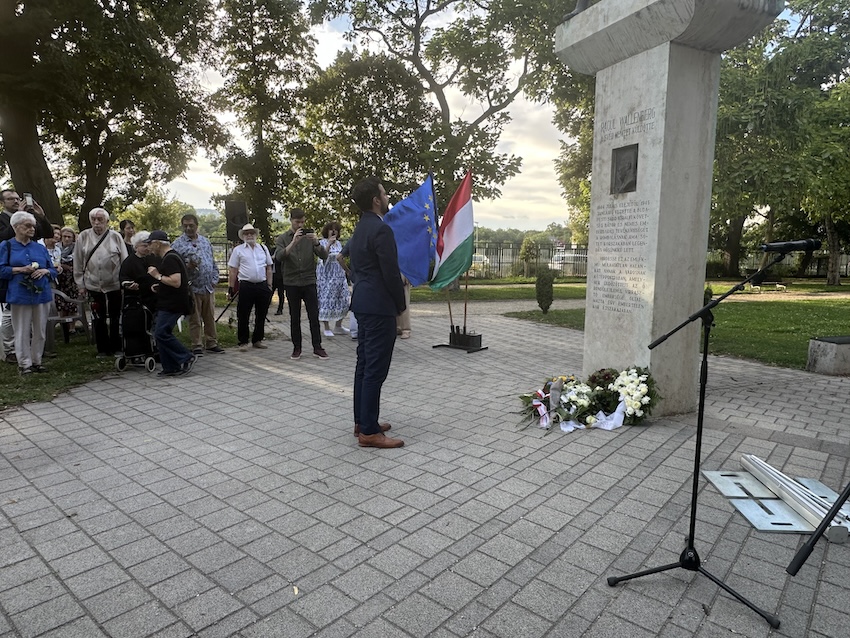
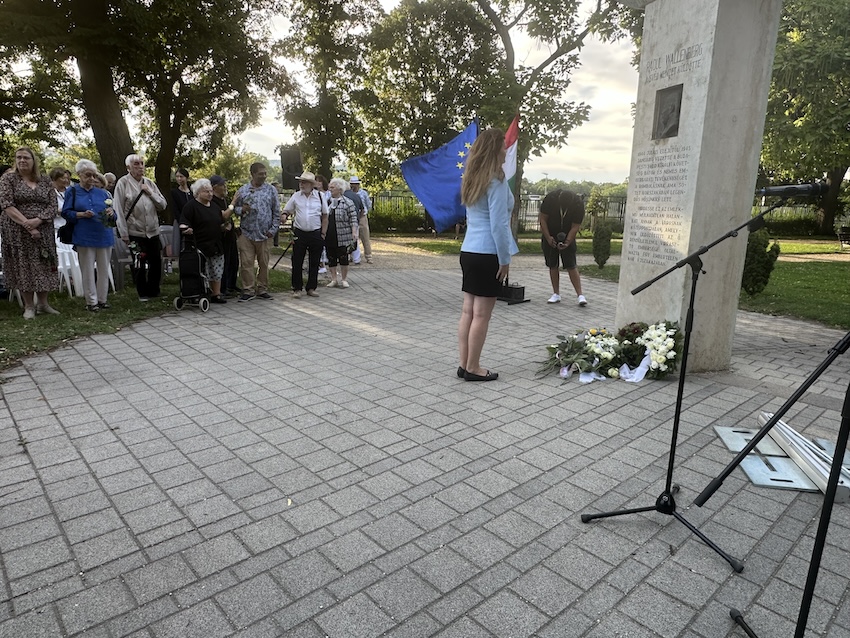

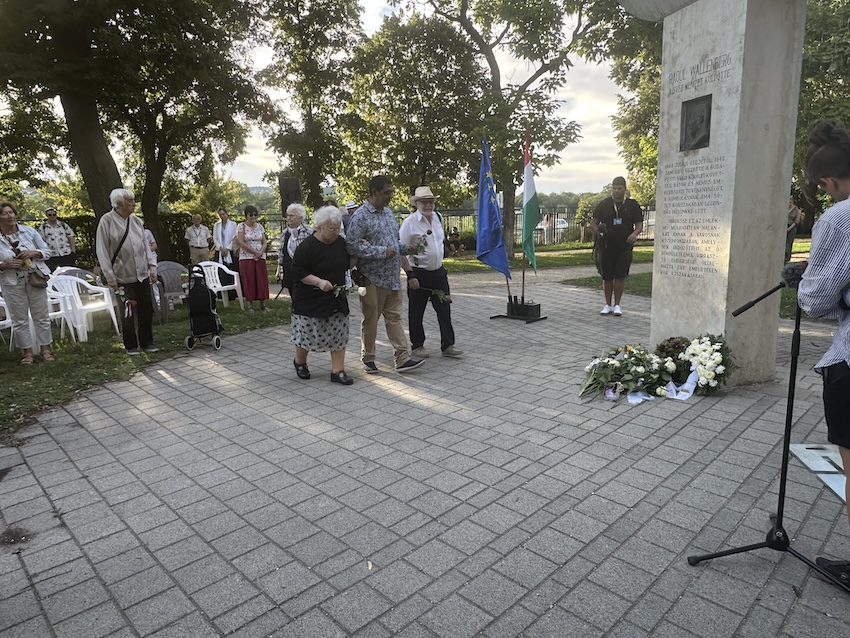
Wallenberg – A Hero Without a Grave
Raoul Wallenberg was born on 4 August 1912, in Lidingö, Sweden. The trained architect and businessman arrived in Budapest on 9 July 1944, at the request of the Swedish government and with the support of the U.S. War Refugee Board.
Carrying only two backpacks, a coat, and a revolver, he set out to save Budapest’s Jews from deportation. What could one man do against the Nazi machine that, aided by Hungarian authorities, had already subjugated half of Europe? As history proved – everything.
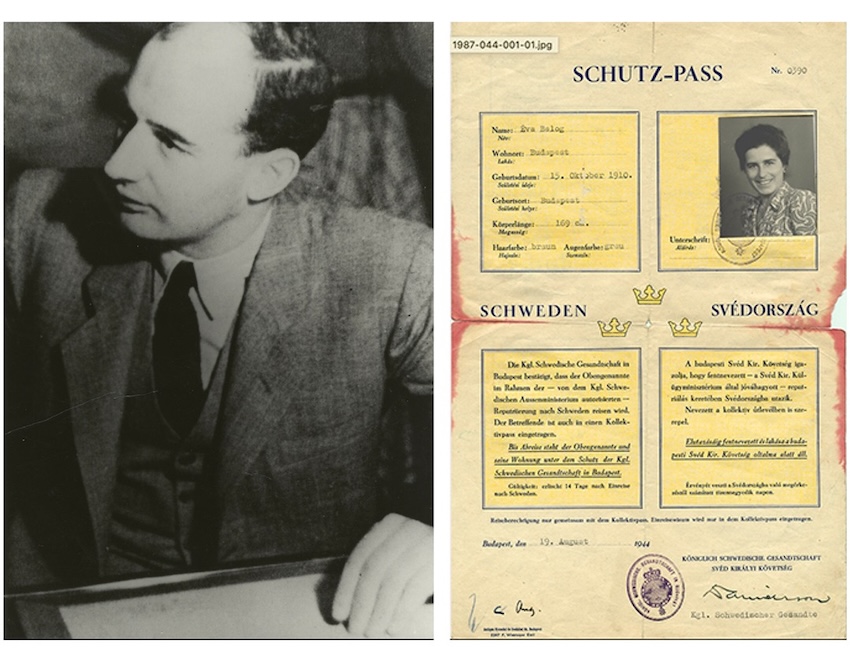
At just 31 years old, Wallenberg knowingly accepted a mission that placed him in constant danger. He used every possible means – protective passports, safe houses, bribery, persuasion, and sheer audacity – to wrest thousands from the grip of persecution. Tens of thousands of Hungarian Jews survived over six perilous months thanks to his tireless work. His daring interventions included confronting German and Arrow Cross officials and, at times, physically pulling people from death marches or deportation trains.
On 17 January 1945, shortly after Soviet forces entered Budapest, Wallenberg was arrested by Soviet officers as he prepared to travel to Debrecen to meet the Provisional National Government. He was never seen again. Before leaving, he told his colleagues – who warned him against the journey – with foreboding words: “I do not know whether I am a guest, or a prisoner.”
His abandoned car was later found in Buda, just 50 meters from a deeply moving monument by Hungarian sculptor Imre Varga, erected in 1987 from Swedish marble donated by the Swedish government. The monument was commissioned by Nicolas Salgo, U.S. Ambassador to Hungary (1983–1986), himself of Hungarian origin, together with the Wallenberg family and the Municipality of Budapest.
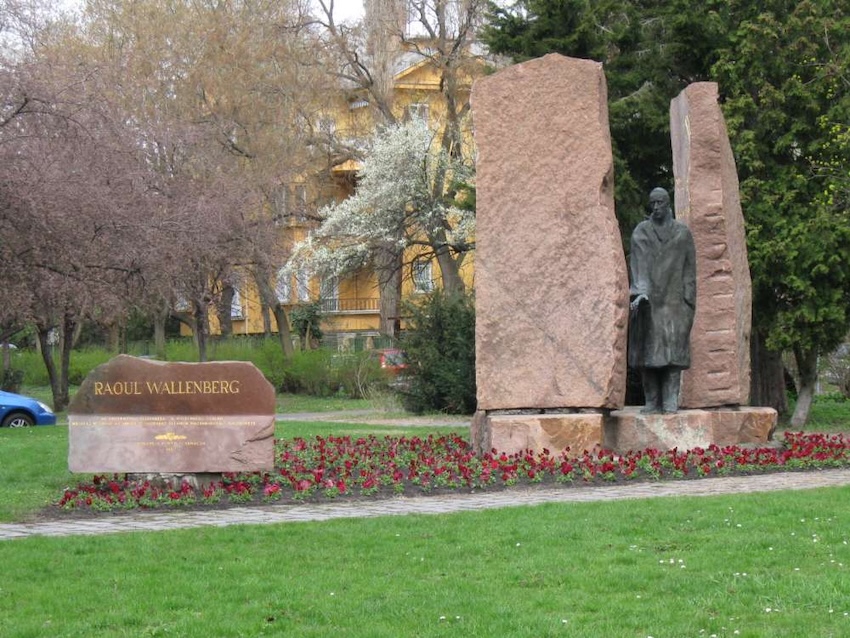
Remembering His Example
Honoured worldwide as Righteous Among the Nations by Yad Vashem, and an honorary citizen of the United States, Canada, and Israel, Wallenberg remains an enduring symbol of moral courage. Streets, schools, and monuments across the globe bear his name, including several in Budapest. His memory is not only a tribute, but also a call to defend humanity and justice today.

The Raoul Wallenberg Memorial in Szent István Park
The Wallenberg Memorial depicts Saint George slaying the dragon, a powerful symbol of Wallenberg’s struggle against Nazism. Created in 1948 by sculptor Pál Pátzay, it was scheduled to be unveiled on 10 April 1949, but was toppled and removed just hours before the ceremony. The statue vanished, just as Wallenberg’s fate became a taboo under socialist Hungary. The original stands today in Debrecen in front of the Biogal pharmaceutical factory.
The current 5.8-metre-high monument in Szent István Park is a replica by sculptor Sándor Györfi, with the pedestal designed by architect László Rajk, and the portrait recreated by Pátzay’s student, István Marosits. It was inaugurated on 18 April 1999.
Its inscription reads: “Raoul Wallenberg, envoy of the Swedish nation, led the courageous humanitarian mission of the Royal Swedish Legation in Budapest from July 1944 to January 1945. In that dark time of destruction, he became our legendary hero. May this monument proclaim our eternal gratitude in the heart of the city whose persecuted citizens were protected by his tireless humanity during the night of an inhuman age.”
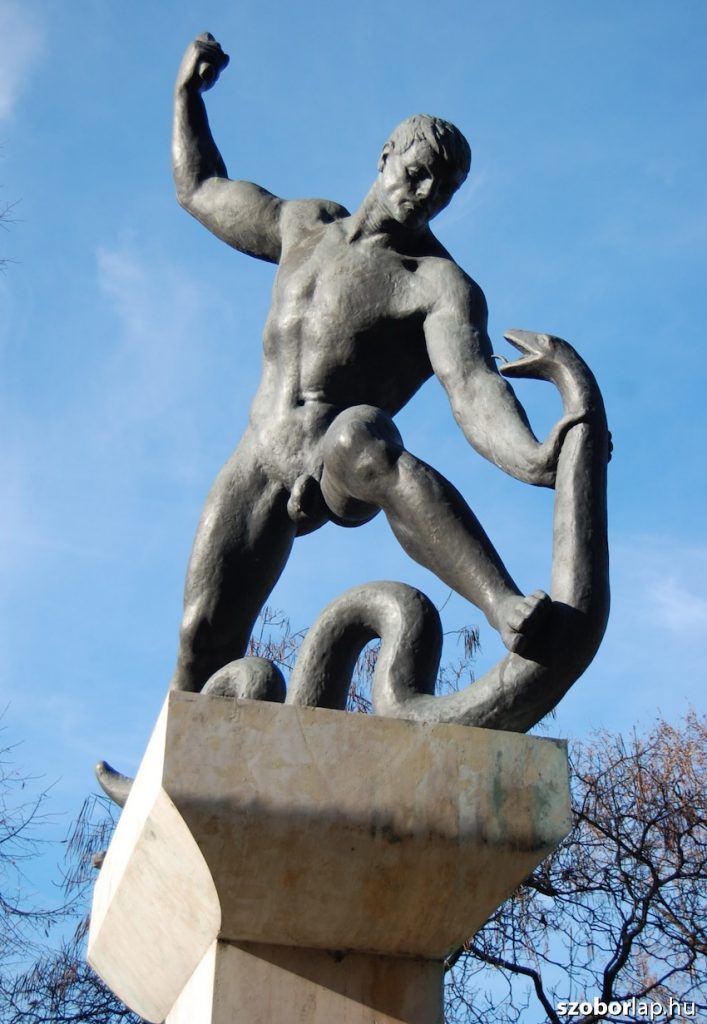

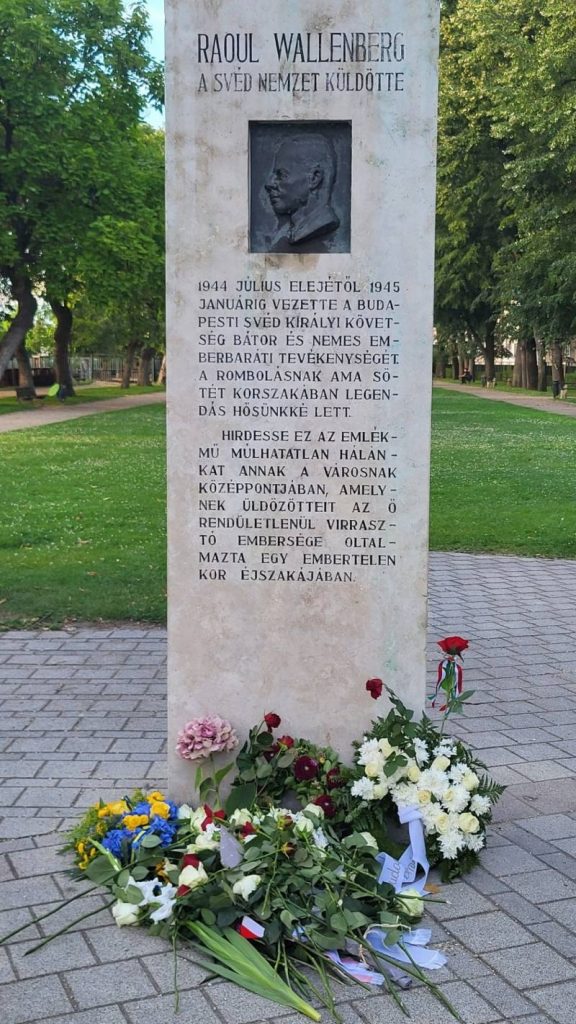
The Raoul Wallenberg Memorial at Erzsébet Square
In 2014, a new memorial was unveiled in Budapest’s Erzsébet Square. This unconventional monument blends into its surroundings rather than dominating them. At first glance, it appears to be a simple bench with a diplomat’s briefcase resting upon it. Yet the bench twists into broken, irregular forms. The briefcase, bearing the initials R.W., speaks silently of Raoul Wallenberg’s absence, a fact further explained by the bilingual inscription.
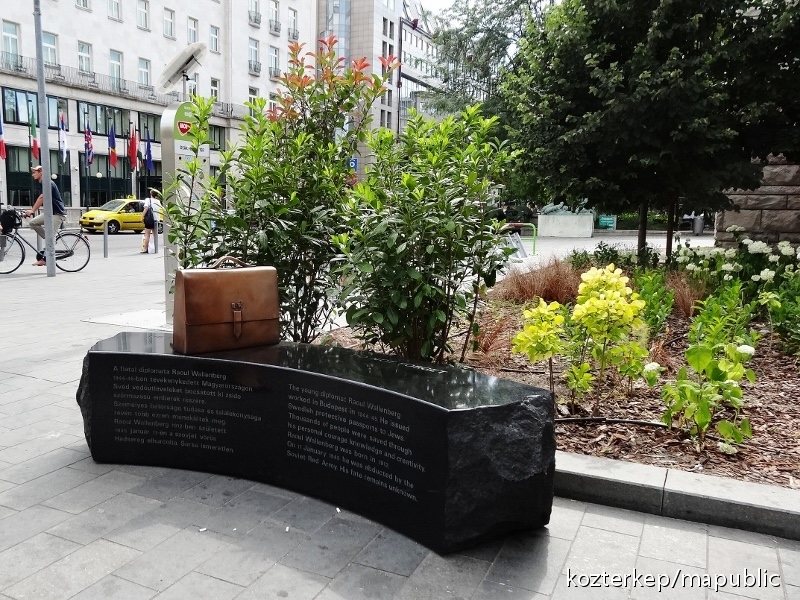
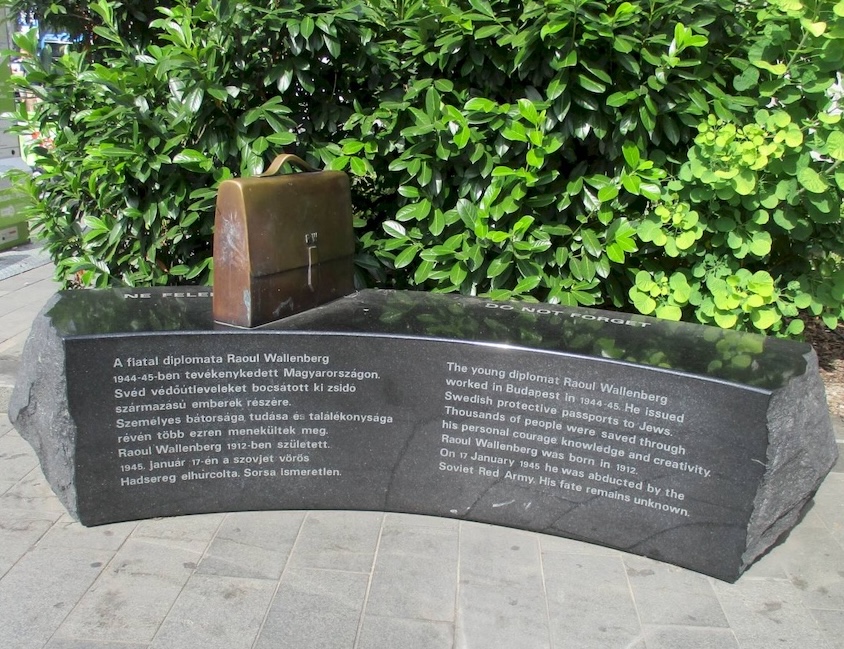
New Research Published
Wallenberg’s story was revisited in “Raoul Wallenberg’s Calvary” by Sweden-based author Georg Sessler, published in 2024 after more than two decades of research. The book offers new insights into Wallenberg’s Budapest mission and challenges long-standing myths about his disappearance. Sessler stated that his goal was to provide “a more accurate and nuanced understanding” of Wallenberg’s work and tragic fate.
The volume was launched at the Hungarian Embassy in Stockholm on 4 February 2025, in connection with International Holocaust Remembrance Day and the 80th anniversary of the liberation of Auschwitz-Birkenau. The Hungarian edition: Raoul Wallenberg Kálváriája was presented in Budapest on 6 May 2025.
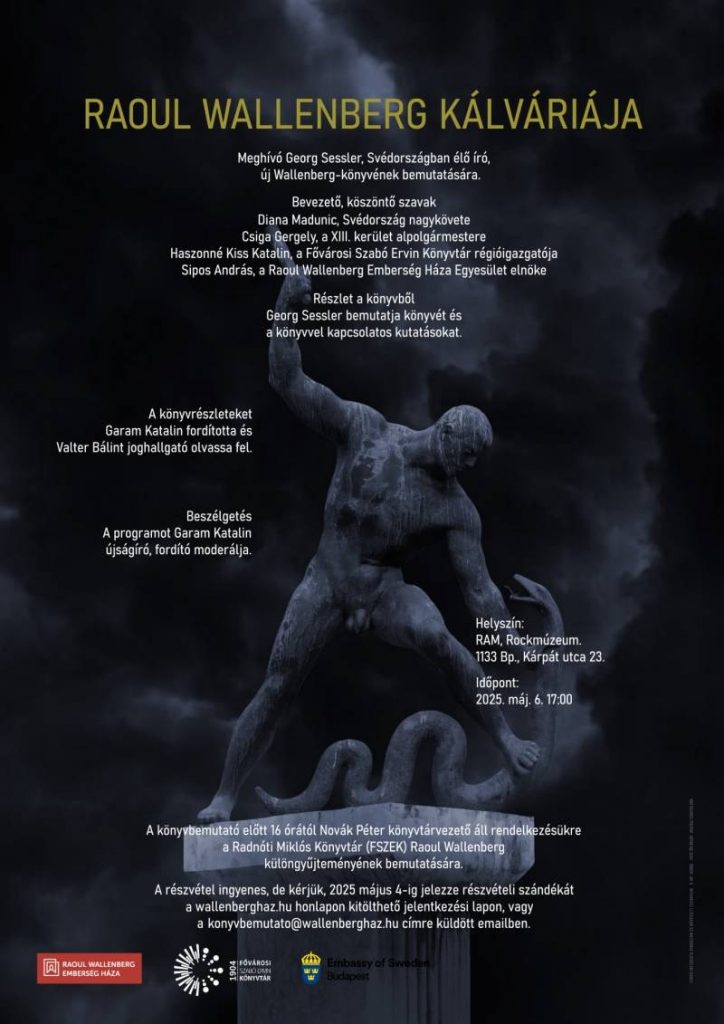
Sources: Embassy of Sweden in Budapest, Mazsihisz
Photos from the Embassy of Sweden in Budapest, and DPA



